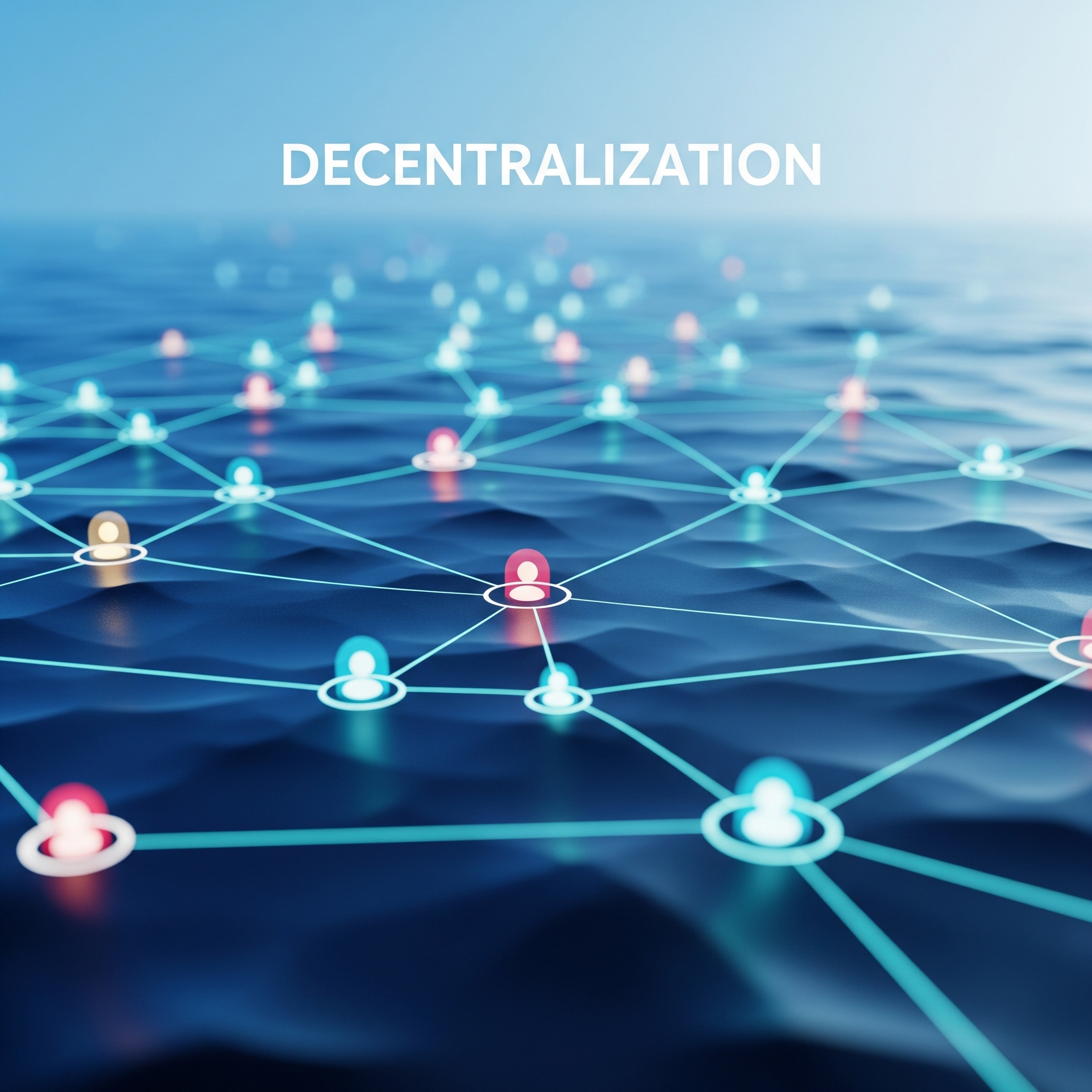Decentralization
Contents
Decentralization
Decentralization is the process by which the activities of an organization, system, or government are distributed or delegated away from a central, authoritative location or group. In a decentralized system, control and decision-making are spread among various participants, rather than being concentrated in a single entity. This concept is fundamental to many modern technologies and organizational structures, particularly in the realm of blockchain and Web3.
---
Core Principles
Decentralization is characterized by the following core principles:
- No Single Point of Failure: By distributing control and resources, the system becomes more resilient to failures or attacks on any individual component. The entire system does not collapse if one part fails.
- Reduced Reliance on Trust: Participants rely less on trusting a central authority and more on the integrity of the system's design and consensus mechanisms. This is often achieved through cryptography and verifiable rules.
- Increased Transparency (often): In many decentralized systems (especially public ones), operations and data are transparent and auditable by all participants, fostering accountability.
- Censorship Resistance: Without a central point of control, it becomes more difficult for any single entity to censor information, block transactions, or control access.
- Greater Participation: Decentralized systems can often allow for broader participation and direct involvement from a wider range of stakeholders.
---
Types of Decentralization
Decentralization can manifest in different forms, often categorized by what aspect of a system is being decentralized:
- Architectural Decentralization: Refers to the physical distribution of a system's components.
* No single point of control: There isn't one central server or database that can be shut down. * Examples: Peer-to-peer networks (like BitTorrent), distributed databases, blockchain networks where copies of the ledger are maintained by many nodes.
- Political Decentralization: Concerns the distribution of power and decision-making authority.
* No central governing authority: Decision-making is spread among participants through consensus mechanisms, voting, or other distributed governance models. * Examples: Decentralized Autonomous Organizations (DAOs), some forms of federal governance, community-led open-source projects.
- Logical Decentralization: Relates to whether the system behaves like a single, monolithic entity or a collection of independent components.
* Lack of a single, coherent state: The system's state is an aggregation of many independent states managed by different participants. * Examples: Federated identity systems, microservices architectures.
---
Centralization vs. Decentralization
| Feature | Centralized System | Decentralized System |
|---|---|---|
| Control | Single entity or small group | Distributed among many participants |
| Decision-making | Top-down | Consensus-driven, bottom-up, or distributed |
| Single Point of Failure | High | Low |
| Transparency | Often opaque, controlled by central entity | Often high (especially public blockchains) |
| Censorship | Easier to impose | Difficult to impose |
| Efficiency | Can be very efficient (centralized coordination) | Can be less efficient (consensus overhead) |
| Scalability | Can scale vertically, but horizontally can be complex | Can scale horizontally, but coordination can be complex |
| Trust Model | Trust in central authority | Trust in system design, cryptography, and consensus |
---
Role in Blockchain and Web3
Decentralization is a foundational concept for blockchain technology and the broader Web3 movement.
- Blockchain: Blockchain networks are inherently decentralized at an architectural level. No single server or organization hosts the entire blockchain; instead, copies of the ledger are distributed across thousands of independent "nodes" globally. This distribution is key to their immutability and resistance to censorship.
- Cryptocurrency: Cryptocurrencies like Bitcoin and Ethereum are decentralized in that no central bank or government controls their issuance or transactions. Their value and integrity are maintained by the consensus of the network participants.
- Decentralized Applications (dApps): These applications run on decentralized networks (like Ethereum) rather than on centralized servers. This means they are not controlled by a single company and can be more resilient to downtime or censorship.
- Decentralized Finance (DeFi): DeFi aims to recreate traditional financial services (lending, borrowing, trading) in a decentralized, peer-to-peer manner, removing intermediaries like banks.
- Decentralized Autonomous Organizations (DAOs): DAOs are organizations governed by rules encoded as smart contracts on a blockchain, with decision-making power distributed among token holders, rather than a central board or CEO.
---
Advantages of Decentralization
- Resilience and Robustness: More resistant to attacks, failures, and outages.
- Censorship Resistance: Difficult for any single entity to control or block information/transactions.
- Transparency and Auditability: Operations are often publicly verifiable, increasing trust.
- Reduced Corruption: Less opportunity for single points of corruption or manipulation.
- Innovation: Open and permissionless systems can foster more rapid and diverse innovation.
- User Empowerment: Gives users more control over their data and participation.
---
Challenges of Decentralization
- Scalability: Reaching consensus across a large distributed network can be slow, leading to throughput limitations.
- Complexity: Designing, developing, and maintaining decentralized systems can be significantly more complex.
- Governance: Achieving effective decision-making and upgrades in a truly decentralized system can be challenging.
- Efficiency: Consensus mechanisms often require more resources (e.g., energy for Proof-of-Work).
- User Experience: Can sometimes be less user-friendly due to the absence of centralized support.
- Regulatory Uncertainty: The lack of clear jurisdictional control can pose regulatory challenges.
---
